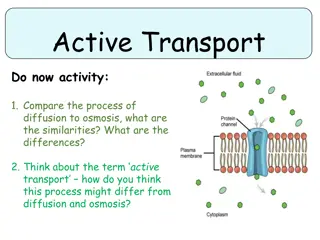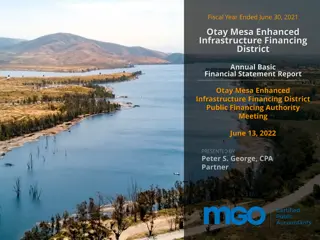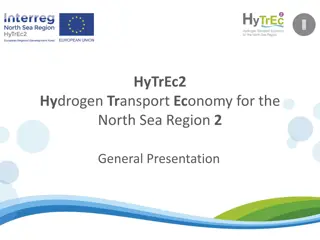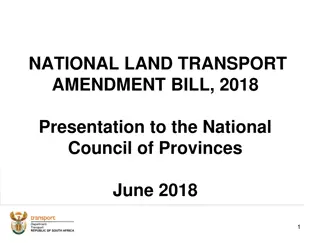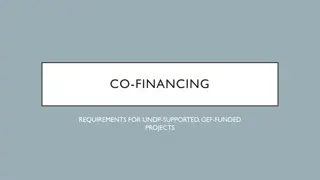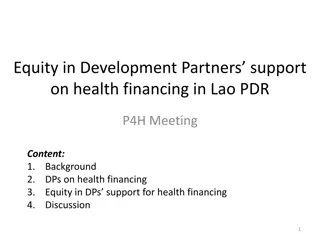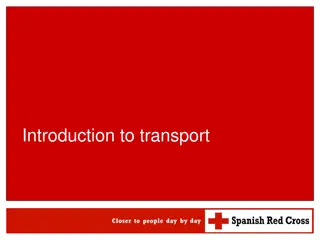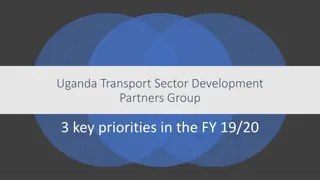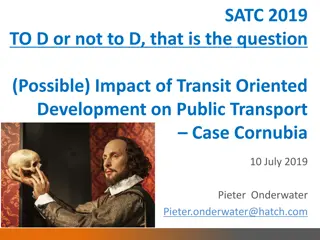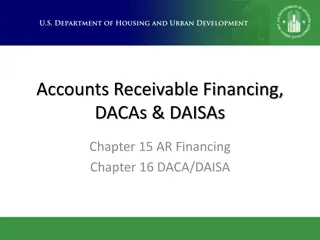
Financing Solutions and Challenges in the Transport Industry
Explore the role of financing in the transport industry, focusing on road transportation in The Gambia and the challenges faced by companies like The Gambia Public Transport Corporation. Learn how transport finance helps overcome cash flow issues and enables growth in the haulage and transport sector.
Download Presentation

Please find below an Image/Link to download the presentation.
The content on the website is provided AS IS for your information and personal use only. It may not be sold, licensed, or shared on other websites without obtaining consent from the author. If you encounter any issues during the download, it is possible that the publisher has removed the file from their server.
You are allowed to download the files provided on this website for personal or commercial use, subject to the condition that they are used lawfully. All files are the property of their respective owners.
The content on the website is provided AS IS for your information and personal use only. It may not be sold, licensed, or shared on other websites without obtaining consent from the author.
E N D
Presentation Transcript
ROLE OF FINANCING IN THE TRANSPORT INDUSTRY
ROAD TRANSPORTATION- PROFILE AND CONDITION The total classified road network of The Gambia is estimated at about 5000 km of primary, secondary, urban and rural roads. About 1500 (30%) of the network function as the primary road system, connecting important economic centers to gateways (sea port, airport, and border crossings) and the capital city of Banjul. About 93.0% of the primary network is oriented in a latitudinal way running in a west- east direction on the North and South Banks of The Gambia River as per the shape of the country while the balance of only about 85km connect the two primary west-east highways on both banks of The Gambia River in a longitudinal axis. The secondary road network of 540 km accounts for 10.8% of the network and connect the secondary towns/economic centres to the primary road network. The urban roads estimated at 374km (7.48%) are confined to Banjul and Greater Banjul Area; and excludes the primary and secondary roads intercepted by Banjul urban boundaries. The rural feeder roads consist of 2,586 km and account for 51.72% of the classified network.
ROAD TRANSPORT INDUSTRY The Gambia Public Transport Corporation was set up by the Act of Parliament in 1976 to solve the public transport needs of the Gambia population, with following major objectives : to play a critical and important socio-economic role as a national transporter by providing a safe, reliable, affordable and comfortable service; to operate on a sound commercial venture basis by extending the operations to the entire country and even to neighbouring Senegal; to set up tariffs that can earn sufficient returns to replace ageing fleet; to provide for reserves sufficient to finance the cost of commercially justifiable expansion. From 1976 to 2002, the GPTC was successful in carrying out these core mandates, while posting substantial return on investment. From 2003 onwards however, the fortune of the company changed with purchase of old Pegaso and Mercedes Benz buses; with operation results not able to service the huge overdraft contracted to purchase the buses.
TRANSPORT FINANCE Cash flow in the haulage and transport industry can be difficult, with rising fuel prices and high operational costs. This can cause serious issues for a transport company when it wants to expand by acquiring new vehicles or pitching for new business. Transport finance offers a way for businesses to release working capital , specifically from haulage and freight transactions, that might otherwise remain tied up in invoices for long periods of time, allowing them to grow. Transport finance comes in the form of asset-based lending, usually where loans are secured against assets (i.e. vehicles).
LACK OF FUNDING Transport funding initiatives are generally not sufficient for maintaining and improving the performance of transport systems. This was a major driver behind privatization and deregulation in the passenger and freight transport industries worldwide.
DIVERGENCE OF PURPOSE Transport finance initiatives should be designed to promote productivity gains, such as increased accessibility, capacity, and performance. Many investment projects are politically instead of commercially driven, which creates a divergence in the purpose of transportation. Uncertainty in the outcome. Transport finance initiatives differ in their probable impacts on transport system performance.
CASE OF THE GAMBIA ROLE OF FINANCING The Gambia Transport Service Company was formed in 2013 as a private company to facilitate easy and timely movement of goods and people for the convenience of the traveling public who are mostly at the mercy of shylock type of commercial drivers. It was formed by Pensioners fund i.e. Social Security and Housing Finance Corporation which makes it a hybrid company. The Modus Operandi of the company is very synonymous with the defunct GPTC.
FINANCING OF BUSES During the last purchase of buses by the company The use of Asset Based Lending came into play. What is Asset based Lending? Asset-based lending is the business of loaning money in an agreement that is secured by collateral. An asset-based loan or line of credit may be secured by inventory, accounts receivable, equipment, or other property owned by the borrower. The asset-based lending industry serves business, not consumers. It is also known as asset-based financing.
ASSET BASED FINANCE LINKED TO MURABAHAH Mur ba ah: is a popular Shari ah-compliant sale transaction mostly used in trade and asset financing. The bank purchases the goods and delivers them to the customer, deferring payment to a date agreed by the two parties. The expected return on mur ba ah is usually aligned with interest payments on conventional loans, creating a similarity between mur ba ah sales and asset-backed loans.
CONCLUSION Financing on transport related activities is one of the most difficult and robust systems under the Transportation Industry. In The Gambia, transport companies have failed because of difficult funding opportunities. Low fares, difficult road terrain have impacted in high revenue generation and higher costs. This impacted in generating the required cash flow needed to get adequate financing to finance long term operations relating to vehicle maximization without Governmental support.





